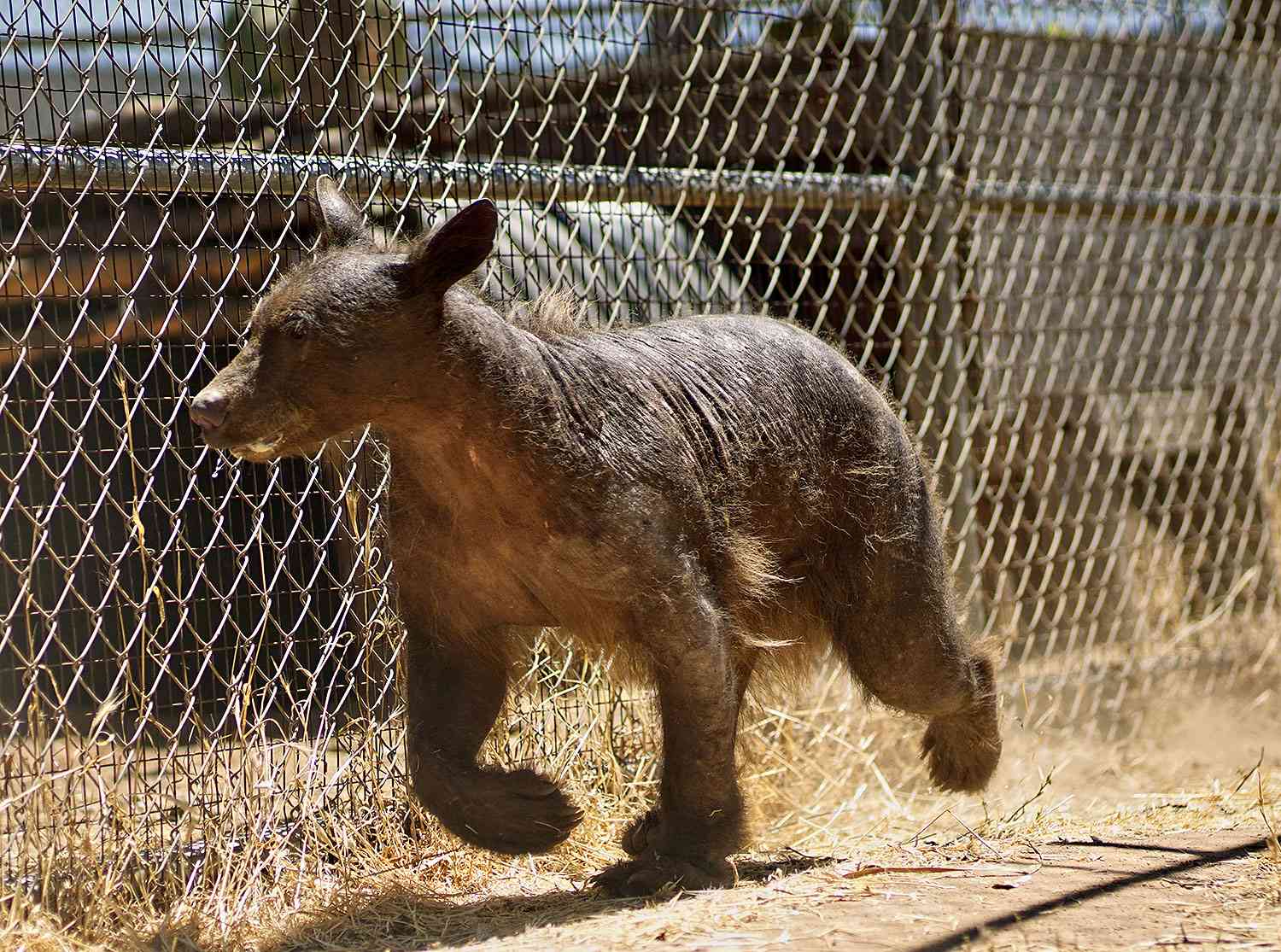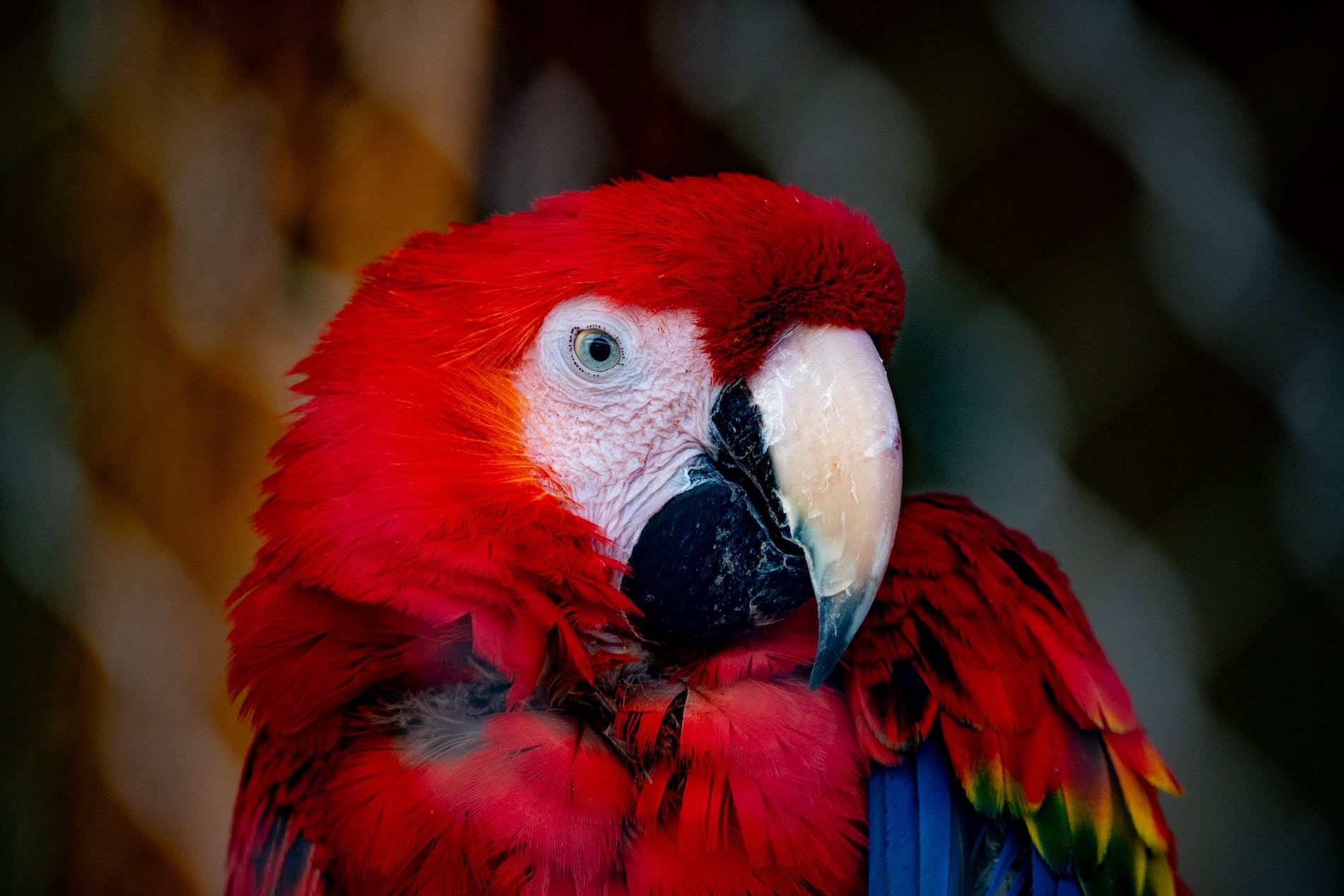Why Are These Bears Bare?
You may have seen a small female bear without fur on the internet or at her home in the Folsom City Zoo Sanctuary. It turns out that animals can suffer from hair loss, too.
This bald bear isn’t shaved to look like this. Instead, it is a rare skin condition that naturally occurs. What happened to this bear? Let’s get into it!
What Happened to This Hairless Bear?
In the spring of 2021, the California Department of Fish and Wildlife (CDFW) placed a young, orphaned, female black bear with a skin condition in the Folsom Zoo in Sacramento County. The sanctuary had lost its popular 25-year-old black bear to old age and had space for the young female bear.

Source: The Fund for Animals Wildlife Center
The bear had very thick crusted skin, according to CDFW. The bear was discovered to have a severe, chronic skin infection known as Trichophyton fungal infection.
What is Trichophyton?
Trichophyton is a rare infection that causes tinea, which includes athlete’s foot, ringworm, jock itch, and similar nail, beard, skin, and scalp infections. The fungi prefer to infect humans but will infect any warm-blooded host available.

Source: Wikimedia Common
Fear not, Trichophyton is curable with intensive treatments. Based on CDFW’s Wildlife Health Lab’s previous experiences with similar cases, veterinary specialists carefully plan for the hairless bear.
How Is the Bald Bear Being Treated?
The bear with no fur underwent an extensive treatment process, which included weekly clinical baths, a suite of antimicrobial drugs, a carefully constructed diet, and heaters to help the bear maintain its body temperature during the night.

Source: The Humane Society of the United States/YouTube
However, the WHL wants to be careful about how the treatment goes with the hairless grizzly bear. The bear can become “habituated,” which means they will associate humans with food and lose their natural fear.
Dolores the Bear Goes Hairless
This California bear isn’t the only popular hairless bear. In 2009, there was a hair loss epidemic affecting all of the female black bears at the Leipzig Zoom. According to Trend Hunter, the bears without hair–which included Dolores the bear–were suffering from rashes and skin inflammations.

Source: iamgulshansingh/Reddit
The hairless bear photos are jarring if you have never seen a hairless bear. One expert suggested to the BBC that the cause was a change in climate and the diet of the bears, whose native habitat is South America.
Can Animals Live Without Fur?
Animals are more resilient than we give them credit for. Several animals across various species have a lack of fur for a reason. There are even birds who undergo a hairless transformation when they molt.

Source: Pixabay/Pexels
While the bears with no fur are not natural, they can survive the infection. However, many organizations exist to help cure animals from infections such as Trichophyton.
Other Animals That Are Hairless
Images of a shaved bear might look odd, but they are not the only animals that look strange with no fur. While dogs are typically man’s best friends, providing much-needed cuddles after work, there is a unique hairless dog called the Peruvian hairless dog.

Source: Sarah Ahmed/Wikimedia Commons
Draped in the rich history of the Inca Empire, the Peruvian Hairless Dog isn’t just a breed; it’s a living testament to Peru’s vibrant cultural heritage.
A Hairless Baboon Emerges from the African Bush
In 2013, the Daily Mail reported that a four-foot hairless female baboon was found in the African bush by a housewife in Zimbabwe. Monkeys and apes sometimes lose their hair in rare cases of alopecia or other fungal infections.

Source: Africa Geographic/Twitter
In 2005, at the Paignton Zoo, a mother hamadryas baboon meticulously groomed her son, leaving him completely bald.
Bare Baby Penguins
In the icy South Atlantic, penguins are not in their usual tuxedoed glory, but sporting a shocking new look–patches of bare skin peeking through their sleek feathers. This bizarre sight left scientists utterly baffled. According to Live Science, the balding chicks of African penguins and Magellanic penguins could be experiencing a variety of feather-loss disorders.

Source: Christopher Michel/Wikimedia Commons
“The main problem with this disorder is that chicks must put extra energy into thermoregulation and thus have higher energetic demands than normal chicks making starvation more likely,” said study researcher Olivia Kane of the University of Washington in Seattle to Live Science. “Also, depending on the weather they may die from exposure.”
Remember the Raccoon With Alopecia?
Sometimes, finding a bald animal feels like you are seeing a new species of animal. That’s what many people who have found bald raccoons have said, including the woman who discovered Gizmo, a raccoon suffering from alopecia.

Source: Jennifer Garner/Cottage Country Animal Clinic
Dr. Jennifer Garner told Today News that alopecia in wildlife is a result of parasitic diseases, such as mange or fungal infection. However, this is not always the case. Gizmo’s baldness seemed to be a result of hormone imbalances or an inherited genetic disorder.
Birds Lose Feathers for a Variety of Reasons
Balding birds are pretty common. One culprit is psittacine beak and feather disease, a nasty virus that attacks feather follicles. This disease can strike any parrot, regardless of age or species. Some various sources of stress can also be the culprit of the plunking, including a lack of stimulation, sleep deprivation, and sexual frustration (via UC Davis).

Source: Marian Havenga/Pexels
While a change of activity or curbing actions that cause the bird to pluck their feathers can help keep your bird looking like, well, a bird, the behavior can damage the feather follicles permanently.
A Hairless Kangaroo
We don’t often see baby kangaroos until they are mature and ready to emerge from their mother’s pouch. However, a baby kangaroo abandoned by her mother at Serengeti-Part in Germany was sporting a hairless look (via Daily Mail). The animal does not typically develop hair until later in life.

Source: Ethan Brooke/StockSnap.io
To survive, the baby kangaroo needs to be constantly fed and kept warm as it would typically rely on the pouch of its mother. With the right conditions, the hairless kangaroo will grow a fine coat later in life.
